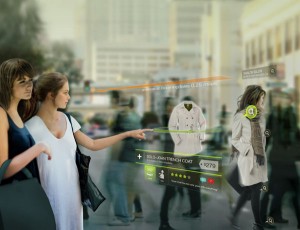By Doug Stephens
There’s an ongoing debate about the viability of “bricks and mortar” retail in a digital world. With online and mobile commerce growing at a double-digit pace and physical stores lagging far behind, how long will it be before clicks overtake bricks? Some extremists predict an almost complete eradication of physical stores.
While I agree that a very high percentage (and eventually the majority) of what we buy we’ll buy online and/or have automatically replenished, I also believe there will always be a place in our society for physical stores.
Why We Shop
The rationale lies in the reasons why we shop in the first place. The first and most obvious reason is to acquire the things we need and want. It’s clearly this aspect of of shopping that the internet has had the greatest impact on. The ability to select from hundreds of products, compare options, order what we want and have it on our doorstep the following day has put perilous pressure on traditional store models.
But the second and perhaps more important reason we shop has remained unchanged since the beginning of time. Shopping is a social activity. We venture to stores for the same reason we congregated in the market bazaar over a thousand years ago – to be a part of the crowd, to people-watch and for a few hours to lose ourselves in the magic of aimless browsing. At it’s core, shopping has much less to do with economic need and a lot more to do with human gratification.
The Changing Definition of “Store”
What’s certain is that our beliefs about the purpose stores serve is changing quickly. The once well-defined line between online and in-store experiences is now being obscured. Social and experiential elements of the physical store are being incorporated into online stores. Apple for example recently applied for a patent that seems aimed at making online shoppers actually feel like they’re in the store by merging aspects of the two experiences. Likewise, collaborations like that between Adidas and Intel, are proving that in-store experiences can be more web-like by bringing information and media right to the customers finger tips in a highly interactive way.
But the question remains, with consumers becoming increasingly comfortable buying just about anything online, what real value will stores bring to the brands they represent? Why build stores?
The Store As Media
We’ve traditionally used media to drive consumers into stores. If marketers could get us across the store threshold, their job was largely done. In other words, the store was the end of the marketing funnel – the goal line so to speak.
Increasingly, stores will instead act as branded media. They will function less as places that simply sell products and more like interactive galleries, showrooms and workshops – places where consumers can have aesthetic, visceral and emotional experiences with the brand – that can’t be replicated online. In this sense the store will become the customer’s first brand touchpoint – not the last. The entry point of the marketing funnel.
With this shift, the financial expectations of stores will change. Brands will regard their stores less as sales and profit centers and more as a marketing and media expense. Conventional store success metrics like sales per square foot and inventory turns, will steadily give way to marketing and media-based metrics. A good day in-store won’t be entirely about how many widgets were sold but also about how many positive impressions were generated and how those impressions converted into social buzz and ongoing brand interactions.
Today’s stores work to fill the customers cart with product. The store of tomorrow will work to fill customer’s handhelds with branded media, applications and other digital incentives to form a relationship with the brand. In other words, the store of the future will not simply aim to open the customer’s wallet but also to open their minds and hearts to the brand in its totality.
This concept represents a profound paradigm shift and one that will be problematic for many retailers to get their arms around. For savvy retail brands on the other hand, it will represent the next frontier of retail supremacy.


